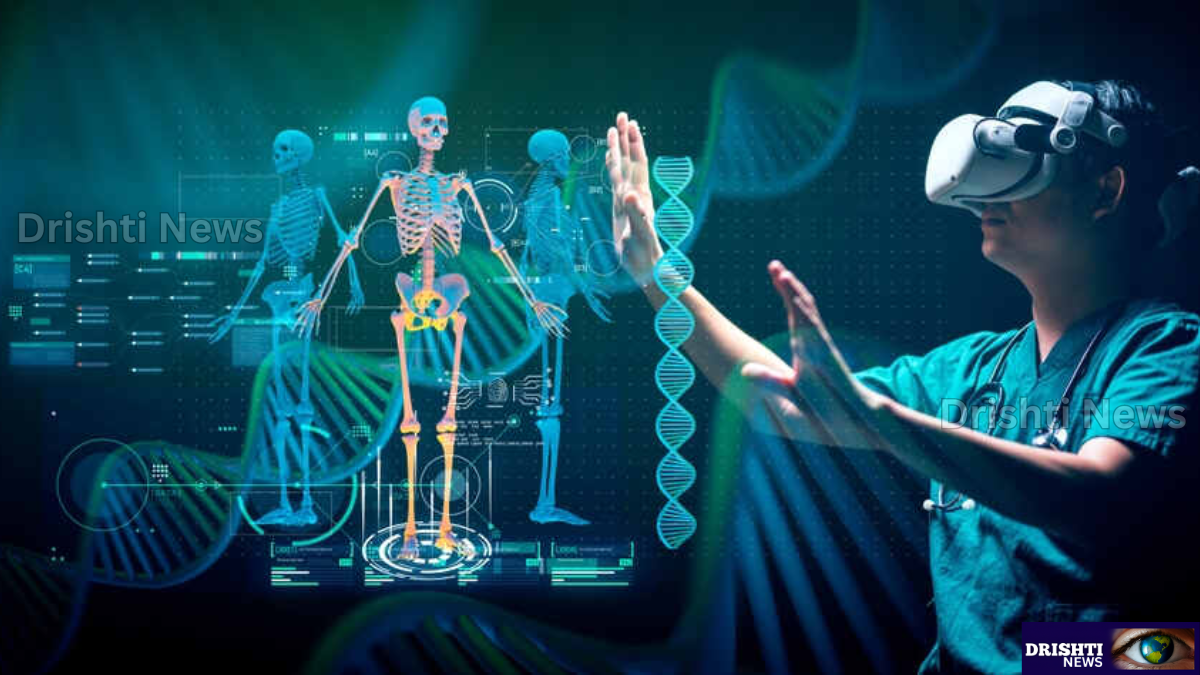In the rapidly advancing landscape of healthcare, artificial intelligence (AI) is emerging as a powerful tool for disease diagnosis. From improving accuracy to accelerating the diagnostic process, AI is revolutionizing the way healthcare professionals approach medical conditions. In this article, we’ll explore 10 essential tips to effectively harness the power of AI in disease diagnosis.
Table of Contents
Understanding AI in Healthcare: A Brief Overview
To embark on the journey of incorporating AI into disease diagnosis, it’s crucial to have a foundational understanding of how AI operates in the healthcare domain. AI algorithms analyze vast amounts of medical data, ranging from patient records to imaging results, to identify patterns and anomalies that might be indicative of various diseases.
10 Ways Harnessing the Power of AI in Disease Diagnosis
Collaboration Between AI and Healthcare Professionals
The integration of AI into disease diagnosis is most effective when it complements the expertise of healthcare professionals. Establishing a collaborative approach ensures that AI serves as a valuable assistant, providing insights and recommendations to aid healthcare practitioners in making well-informed decisions.
By fostering collaboration between AI systems and healthcare professionals, a symbiotic relationship emerges, where the AI acts as a supportive tool rather than a replacement. This collaborative approach not only enhances diagnostic accuracy and efficiency but also promotes a harmonious integration of human expertise and artificial intelligence, ultimately benefiting patient care.
Data Quality Matters: Ensure Accurate Inputs
The accuracy of AI disease diagnosis heavily relies on the quality of the input data. It’s imperative to maintain high standards in data collection, ensuring that the information fed into AI systems is accurate, up-to-date, and representative of diverse patient populations. This data integrity is fundamental to the reliability of AI-assisted diagnoses.
The foundation of reliable AI-assisted diagnoses lies in meticulous data collection. Striving for accuracy, timeliness, and diversity in the input data is imperative. High-quality datasets contribute to the robustness of AI algorithms, ultimately enhancing the precision and dependability of diagnoses in the healthcare setting and reinforcing the credibility of AI-driven insights.
Continuous Learning for AI Algorithms
AI algorithms thrive on continuous learning. Regular updates and training based on new data and emerging medical knowledge enhance the algorithm’s accuracy over time. Implementing a system that allows for ongoing learning ensures that AI stays at the forefront of medical advancements, providing increasingly accurate diagnostic support.
This commitment to continuous learning not only refines the AI algorithm’s proficiency but also positions it as a dynamic tool that adapts to the ever-evolving landscape of medical knowledge. By embracing regular updates and training, healthcare practitioners can leverage AI as a forward-thinking ally, consistently enhancing its diagnostic capabilities to meet the demands of cutting-edge medical advancements.
Addressing Ethical and Regulatory Considerations
As AI becomes more deeply integrated into healthcare, it’s crucial to address ethical and regulatory considerations. Ensure that your AI systems comply with privacy regulations, maintain patient confidentiality, and adhere to ethical standards. A transparent approach to these considerations fosters trust among both healthcare professionals and patients.
User-Friendly Interfaces for Seamless Integration
The successful adoption of AI in disease diagnosis depends on the user experience. Implementing user-friendly interfaces that seamlessly integrate AI insights into existing healthcare workflows facilitates acceptance among healthcare professionals. The goal is to enhance, not disrupt, existing practices.
Strategic Implementation in Specific Specialties
While AI has broad applications in healthcare, strategically implementing it in specific specialties can yield significant benefits. Tailoring AI solutions to the unique challenges and requirements of different medical fields, such as radiology, pathology, or cardiology, maximizes the impact of AI on disease diagnosis.
Patient Education and Informed Consent
As AI plays an increasingly prominent role in disease diagnosis, it’s essential to educate patients about the use of AI technologies in their healthcare. Obtaining informed consent ensures transparency and empowers patients to actively participate in decisions related to AI-assisted diagnoses.
Monitoring and Evaluating AI Performance
Regularly monitor and evaluate the performance of AI algorithms in real-world healthcare settings. Establishing robust evaluation protocols allows healthcare institutions to identify areas for improvement, fine-tune algorithms, and ensure that AI continues to meet the evolving needs of diagnostic practices.
Interoperability and Integration with Existing Systems
Ensure that AI solutions seamlessly integrate with existing healthcare systems. Interoperability is key to facilitating the flow of information between different platforms, enabling a cohesive and efficient diagnostic process that minimizes disruptions to established workflows.
Investment in Robust Cybersecurity Measures
Recognize the importance of safeguarding sensitive medical data. Prioritize investments in robust cybersecurity measures to protect patient information from potential breaches. A secure AI infrastructure builds trust among healthcare professionals and patients, fostering a conducive environment for the widespread adoption of AI in disease diagnosis.
Conclusion
The integration of AI into disease diagnosis holds immense potential for improving healthcare outcomes. By following these nine tips, healthcare professionals and institutions can navigate the implementation of AI with confidence, ensuring that this cutting-edge technology becomes an invaluable ally in the quest for accurate and timely disease diagnoses.


 Home
Home










